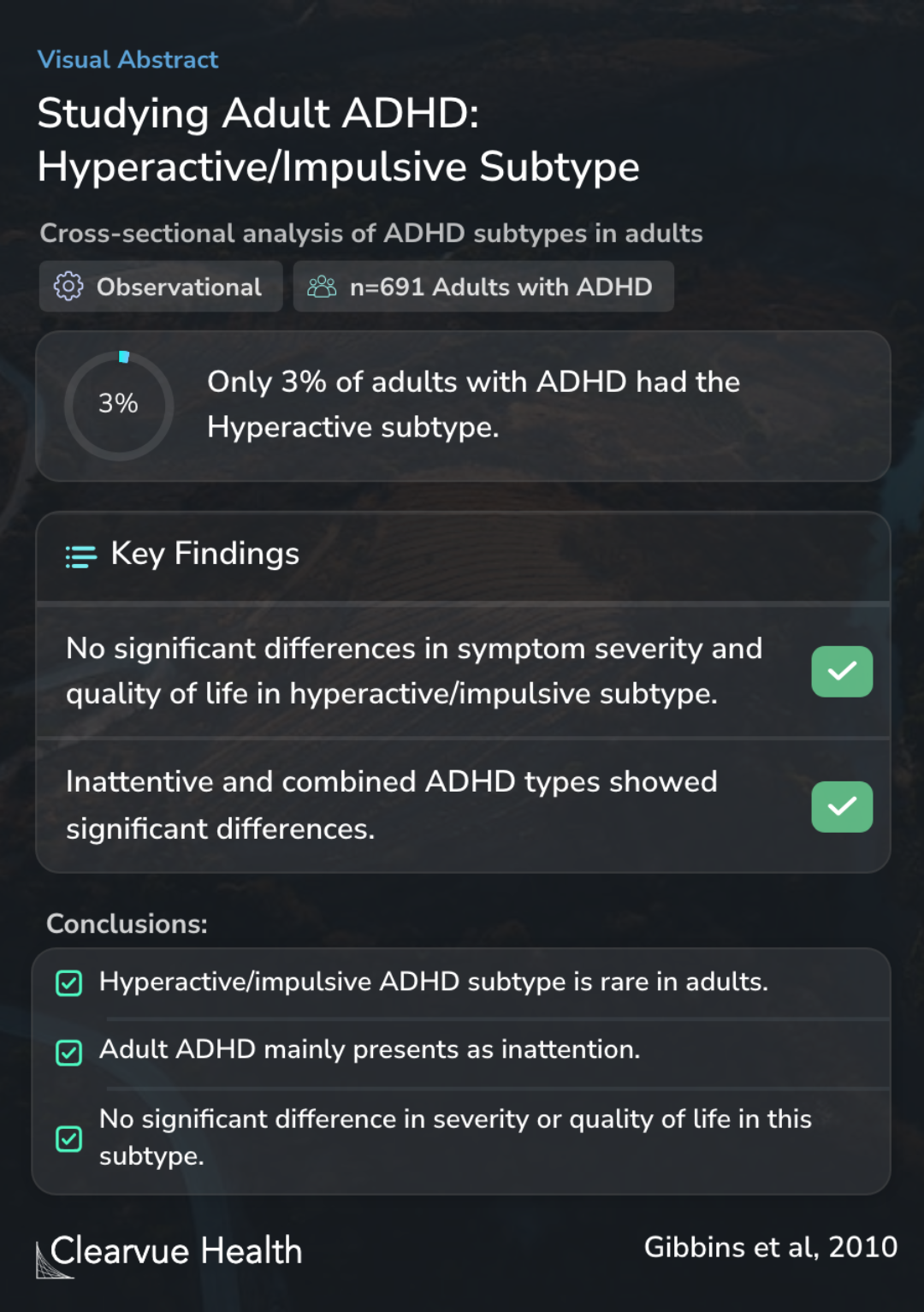ADHD-hyperactive/impulsive subtype in adults
Studying Adult ADHD: Hyperactive/Impulsive Subtype
Gibbins C, Weiss MD, Goodman DW, Hodgkins PS, Landgraf JM, Faraone SV

Objectives
This study is a first of its kind, focusing on the ADHD-hyperactive/impulsive subtype in a large adult population. The Quality of Life, Effectiveness, Safety, and Tolerability (QuEST) study involved 725 adults diagnosed with various ADHD subtypes, aiming to provide insights into this particular subtype’s prevalence and characteristics in adults.
This is the first study to evaluate ADHD-hyperactive/impulsive subtype in a large clinical sample of adults with ADHD. The Quality of Life, Effectiveness, Safety and Tolerability (QuEST) study included 725 adults who received clinician diagnoses of any ADHD subtype.
Methods
The researchers used cross-sectional baseline data from 691 adults diagnosed with either hyperactive/impulsive, inattentive, or combined ADHD subtypes. This approach was used to compare these groups based on the ADHD Rating Scale (ADHD-RS) and their health-related quality of life.
Cross-sectional baseline data from 691 patients diagnosed with the hyperactive/impulsive (HI), inattentive (IA) and combined subtypes were used to compare the groups on the clinician administered ADHD-RS, clinical features and health-related quality of life.
Results
The study's findings revealed a distinct pattern among the ADHD subtypes. Only 3% of the adults were diagnosed with the hyperactive/impulsive subtype. Interestingly, this group showed inattention levels similar to the inattentive group, and no significant differences were observed in symptom severity or quality of life between the hyperactive/impulsive and other subtypes. By contrast, the inattentive and combined types showed notable differences, suggesting that in adults, hyperactivity is less prominent, and inattention remains a significant concern. This raises questions about the validity of the hyperactive/impulsive subtype in adults.
A consistent pattern of differences was found between the ADHD-I and combined subtypes, with the combined subtype being more likely to be diagnosed in childhood, more severe symptom severity and lower HRQL. Twenty-three patients out of the total sample of 691 patients (3%) received a cli...
Conclusions
The study concludes that the hyperactive/impulsive subtype of ADHD is rare in adults, and adult ADHD primarily presents as inattention. There were no significant differences in symptom severity or quality of life for adults with the hyperactive/impulsive subtype compared to other subtypes. These findings challenge the traditional understanding of ADHD subtypes in adults.
Keywords: ADHD, adult, attention deficit, quality of life, subtypes.
Key Takeaways
Context
The current study's focus on the hyperactive/impulsive subtype of ADHD in adults contributes to a broader understanding of how ADHD symptoms change over time. Biederman et al.'s research indicates that measuring ADHD rates can be complex, and attention difficulties often persist the longest, aligning with the present study's findings of inattention being a primary concern in adult ADHD.
While many children with ADHD improve, some don't, Agnew-Blais et al. found that most children with ADHD improve by adulthood, but those with persistent symptoms face challenges.